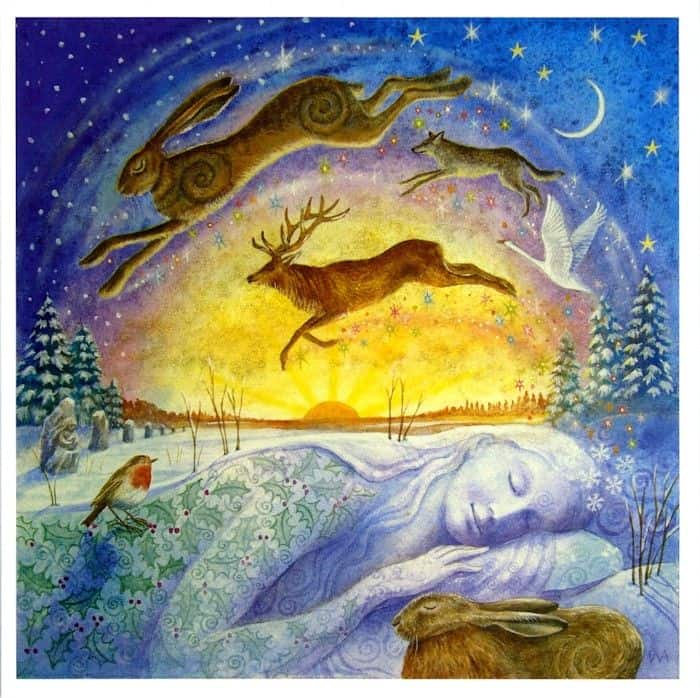Blog
Meet Sh 2-140, a beautiful H ii region that lies on the southeast edge of Lynds 2304 — a dark nebula. Also pictured nearby is the star cluster, dubbed a IC 1396 (also known as Trumpler 37), which, in turn, is situated near the edge of the Cepheus bubble (this immensely large expanding shell of interstellar materials, like gas and dust, surrounds something called the Cep OB2 association). The whole lot, including the famous Elephant’s Trunk nebula, can be found about 3,000 light-years from Earth in the constellation of Cepheus.
more...Francisco Gustavo Sánchez Gomes (21 December 1947 – 25 February 2014), known as Paco de Lucía [ˈpä.ko̞ ð̞e̞ lu.ˈθi.ä], was a Spanish virtuoso flamenco guitarist, composer and producer. A leading proponent of the new flamenco style, he helped legitimize[clarification needed]flamenco among the establishment in Spain, and was one of the first flamenco guitarists to cross over successfully into other genres of music such as classical and jazz. Richard Chapman and Eric Clapton, authors of Guitar: Music, History, Players, describe de Lucía as a “titanic figure in the world of flamenco guitar”,and Dennis Koster, author of Guitar Atlas, Flamenco, has referred to de Lucía as “one of history’s greatest guitarists”.
De Lucía was noted for his fast and fluent picados (fingerstyle runs). A master of contrast, he often juxtaposed picados and rasgueados(flamenco strumming) with more sensitive playing and was known for adding abstract chords and scale tones to his compositions with jazz influences. These innovations saw him play a key role in the development of traditional flamenco and the evolution of new flamenco and Latin jazz fusion from the 1970s. He received acclaim for his recordings with flamenco singer Camarón de la Isla in the 1970s, recording ten albums which are considered some of the most important and influential in flamenco history.
Some of de Lucía’s best known recordings include Río Ancho (later fused with Al Di Meola‘s Mediterranean Sundance), Entre dos aguas, La Barrosa, Ímpetu, Cepa Andaluza and Gloria al Niño Ricardo. His collaborations with guitarists John McLaughlin, Al Di Meola and Larry Coryell in the late 1970s saw him gain wider popularity outside his native Spain. De Lucía formed the Paco de Lucía Sextet in 1981 with his brothers, singer Pepe de Lucía and guitarist Ramón de Algeciras, and collaborated with jazz pianist Chick Corea on their 1990 album, Zyryab. In 1992, he performed live at Expo ’92 in Seville and a year later on the Plaza Mayor in Madrid. After 2004 he greatly reduced his public performances, retiring from full touring, and typically only gave several concerts a year, usually in Spain and Germany and at European festivals during the summer months.
Paco de Lucía was born on 21 December 1947 as Francisco Sánchez Gomes in Algeciras, a city near the far southern point of Spain in the province of Cádiz. He was the youngest of the five children of flamenco guitarist Antonio Sánchez Pecino and Portuguese mother Lucía Gomes; his brothers include flamenco singer Pepe de Lucía and flamenco guitarist Ramón de Algeciras(now deceased). Playing in the streets as a young boy, there were many Pacos and Pablos in Algeciras. In Spain and Latin America, any of these children with common first names would be referred to as follows: ‘”Name of Child”, (son or daughter) of “Name of Mother,”‘ or “Paco (son) of Lucia” in his case, instead of using the child’s last name. Later, after learning to play the guitar and tasked with figuring out a way to bill himself, wanting to honor his Portuguese mother Lucía Gomes, he adopted the stage name Paco de Lucía.
more...Frank Vincent Zappa (December 21, 1940 – December 4, 1993 Baltimore, MD) was an American musician, composer, activist and filmmaker. His work is characterized by nonconformity, free-form improvisation, sound experiments, musical virtuosity, and satire of American culture. In a career spanning more than 30 years, Zappa composed rock, pop, jazz, jazz fusion, orchestral and musique concrète works, and produced almost all of the 60-plus albums that he released with his band the Mothers of Invention and as a solo artist. Zappa also directed feature-length films and music videos, and designed album covers. He is considered one of the most innovative and stylistically diverse rock musicians of his era.
As a self-taught composer and performer, Zappa’s diverse musical influences led him to create music that was sometimes difficult to categorize. While in his teens, he acquired a taste for 20th-century classical composers such as Edgard Varèse, Igor Stravinsky, and Anton Webern, along with 1950s rhythm and blues and doo-wop music. He began writing classical music in high school, while at the same time playing drums in rhythm and blues bands, later switching to electric guitar. His 1966 debut album with the Mothers of Invention, Freak Out!, combined songs in conventional rock and rollformat with collective improvisations and studio-generated sound collages. He continued this eclectic and experimental approach, irrespective of whether the fundamental format was rock, jazz or classical.
Zappa’s output is unified by a conceptual continuity he termed “Project/Object”, with numerous musical phrases, ideas, and characters reappearing across his albums. His lyrics reflected his iconoclastic views of established social and political processes, structures and movements, often humorously so. Zappa’s often comedic lyrics led AllMusic to describe him as the “godfather” of comedy rock. He was a strident critic of mainstream education and organized religion, and a forthright and passionate advocate for freedom of speech, self-education, political participation and the abolition of censorship. Unlike many other rock musicians of his generation, he personally disapproved of drugs and never used them again after briefly trying marijuana, but supported their decriminalization and regulation.
more...Bennie Ross “Hank” Crawford, Jr. (December 21, 1934 – January 29, 2009) was an American R&B, hard bop, jazz-funk, soul jazz alto saxophonist, arranger and songwriter. Crawford was musical director for Ray Charles before embarking on a solo career releasing many well-regarded albums on Atlantic, CTI and Milestone.
World Music with “Chiquetete” on Flamenco Fridays performing Solea.
Spanish flamenco and ballad singer Antonio José Cortés Pantoja, better known as Chiquetete, died in Seville, Spain on December 16, 2018 after surgery complications. He was 70 years old.
Soleá is one of the flamenco palos with the highest number of traditional songs, and it is particularly appreciated by knowledgeable artists and audiences. It is very demanding for singers, as they have to strive to be creative and, at the same time, respectful of the tradition, and they have to succeed in finding a good balance between melodic and rhythmic sides, both extremely difficult. It demands great vocal faculties, and the singer should achieve a balance between passion and restraint.
The melody of a soleá stanza usually stays within a limited range (usually not more than a 5th). Its difficulty lies in the use of melisma and microtones, which demand great agility and precision in the voice. It is usual to start a series of soleares with a more restrained stanza in the low register, while continuing to more and more demanding ornaments in a higher register. The series is quite often finished with a stanza in a much more vivid tempo in the relative Major mode.
more...Hair the musical performed by Theater 55 at Mixed Blood Theater in Minneapolis.
January 31st thru February 10th 2019
Supporting musicians include mick laBriola on percussion, JD on guitars with music director Stephen Houtz.
more...
This image shows the galaxy Messier 94, which lies in the small northern constellation of the Hunting Dogs, about 16 million light-years away. Within the bright ring around Messier 94 new stars are forming at a high rate and many young, bright stars are present within it – thanks to this, this feature is called a starburst ring. The cause of this peculiarly shaped star-forming region is likely a pressure wave going outwards from the galactic centre, compressing the gas and dust in the outer region. The compression of material means the gas starts to collapse into denser clouds. Inside these dense clouds, gravity pulls the gas and dust together until temperature and pressure are high enough for stars to be born.
more...Lawrence Elliott “Larry” Willis (born December 20, 1940) is an American jazz pianist and composer. He has performed in a wide range of styles, including jazz fusion, rock, bebop and avant-garde.
Willis was born in New York City. After his first year studying music theory at the Manhattan School of Music he began performing regularly with Jackie McLean. After he graduated he made his first jazz recording, McLean’s Right Now!, which featured two of Willis’ compositions. His first recording of any type, however, was as a singer with the Music and Arts Chorale Ensemble, performing an opera by Aaron Copland under the direction of Leonard Bernstein. He decided to concentrate on jazz because of the difficulties African American musicians had in finding work in concert music. He is still recording and touring around the world.
Throughout his career he has performed with a wide range of musicians, including a stint of seven years as keyboardist for Blood, Sweat & Tears (beginning in 1972). He spent several years as pianist for Nat Adderley, as well as Roy Hargrove. His latest recording with Paul Murphy, Exposé, demonstrated the fusion principles of bebop and avant-garde jazz. His composition “Sanctuary” began exploring works employing strings. After a successful performance in Frank Lloyd Wright’s Annie Pfieffer Chapel at Florida Southern College’s Child of the Sun Jazz Festival he was commissioned to write a full scale orchestral work for jazz trio and orchestra. He received the Don Redman award in 2011, and the Benny Golson Jazz Master Award at Howard University in 2012.
more...Pleasant Joseph known as Cousin Joe (December 20, 1907 — October 2, 1989) was an American blues and jazz singer, later famous for his 1940s recordings with clarinetist Sidney Bechet and saxophonist Mezz Mezzrow.
He was born in Wallace, Louisiana, United States and worked at Whitney Plantation throughout his childhood.
Until 1945 Cousin Joe toured Louisiana; that year he was asked to take part in the King Jazz recording sessions organized by Mezzrow and Bechet.
Cousin Joe died in his sleep from natural causes in New Orleans, at the age of 81.
more...NGC 1222, seen in this image taken with the Wide Field Camera 3 on board the NASA/ESA Hubble Space Telescope (HST), is a galaxy with a rather eventful story to tell. NGC 1222 has been described as a peculiar example of a type of galaxy known as a lenticular galaxy. Typically, this kind of galaxy would present a rather smooth appearance on the sky and would consist mostly of old, reddish stars. A bit dull, perhaps.
But NGC 1222 is certainly not a typical member of its class — and it’s anything but dull. Observations show the characteristic features of very recent star formation on a huge scale — an event known as a starburst. The reason for all this violent activity is caused by the fact that NGC 1222 is not alone. It actually contains three compact regions, each of which appears to be the central nucleus of a galaxy. Astronomers think that NGC 1222 is in the process of swallowing up two much smaller dwarf galaxies that strayed too close to it. It is likely that the encounter was the trigger for the starburst in NGC 1222, bringing in fresh supplies of gas that are now fuelling the burst of star formation.
Although its peculiarities were first seen in photographic images, these were not able to reveal the level of fine detail that can be recovered by Hubble. The image taken by Hubble allows us to see an astonishing amount of structure in this galaxy, emphasising its colourful history. Against the smooth background of old stars that was the original lenticular galaxy, we can clearly see dark filaments of dust and bright filaments of gas, both associated with the powerful star formation process. 109 Mly away.
more...Kermit Ruffins (born December 19, 1964) is an American jazz trumpeter, singer, and composer from New Orleans, Louisiana, United States. He has been influenced by Louis Armstrong and Louis Jordan and says that the highest note he can hit on trumpet is a high C. He often accompanies his songs with his own vocals. Most of his bands perform New Orleans jazz standards, though he also composes many of his own pieces. Jon Pareles of The New York Times wrote, “Mr. Ruffins is an unabashed entertainer who plays trumpet with a bright, silvery tone, sings with off-the-cuff charm and never gets too abstruse in his material.
more...Leonard White III (born December 19, 1949) is a three-time Grammy Award-winning American jazz fusion drummer, born in New York City, best known for being the drummer of Chick Corea‘s Return to Forever. A resident of Teaneck, New Jersey, White has been described as “one of the founding fathers of jazz fusion”.
more...Henry Roeland “Roy” Byrd (December 19, 1918 – January 30, 1980), better known as Professor Longhair or “Fess” for short, was a New Orleans blues singer and pianist. He was active in two distinct periods, first in the heyday of early rhythm and blues and later in the resurgence of interest in traditional jazz after the founding of the New Orleans Jazz and Heritage Festival in 1970. His piano style has been described as “instantly recognizable, combining rumba, mambo, and calypso.”[1]
The music journalist Tony Russell (in his book The Blues: From Robert Johnson to Robert Cray) wrote that “The vivacious rhumba-rhythmed piano blues and choked singing typical of Fess were too weird to sell millions of records; he had to be content with siring musical offspring who were simple enough to manage that, like Fats Domino or Huey “Piano” Smith. But he is also acknowledged as a father figure by subtler players like Allen Toussaintand Dr. John.”
Byrd was born on December 19, 1918, in Bogalusa, Louisiana. His distinctive style of piano playing was influenced by learning to play on an instrument that was missing some keys. He left the city as a baby with his parents, who were most likely fleeing the racial tension surrounding the Bloody Bogalusa Massacre.
more...Robert Henry Timmons (December 19, 1935 – March 1, 1974) was an American jazz pianist and composer. He was a sideman in Art Blakey‘s Jazz Messengers for two periods (July 1958 to September 1959; February 1960 to June 1961), between which he was part of Cannonball Adderley‘s band. Several of Timmons’ compositions written when part of these bands – including “Moanin’“, “Dat Dere“, and “This Here” – enjoyed commercial success and brought him more attention. In the early and mid-1960s he led a series of piano trios that toured and recorded extensively.
Timmons was strongly associated with the soul jazz style that he helped initiate. This link to apparently simple writing and playing, coupled with drug and alcohol addiction, led to a decline in his career. Timmons died, aged 38, from cirrhosis. Several critics have commented that his contribution to jazz remains undervalued.
Timmons was born in Philadelphia, Pennsylvania, the son of a minister. He had a sister, Eleanor. Both of his parents, and several aunts and uncles, played the piano. From an early age Timmons studied music with an uncle, Robert Habershaw, who also taught McCoy Tyner.
https://www.youtube.com/watch?v=a3dlBI87A9Q
more...NYC bhangra funk crew Red Baraat
more...More Posts
- Sonny Fortune Day
- Cecil McBee Day
- World Music with Hurricane Orchestra
- Daily Roots with Ras Fawzi
- Music for Surviving the Pandemic
- The Cosmos with NGC 2014/2020
- Rick Wakeman Day
- Lou Bennett Day
- Big Joe Turner Day
- Pops Foster Day
- World Music with Afion
- Daily Roots with Christafari
- Music for Surviving the Pandemic
- The Cosmos with Waterspouts
- Enya Day
- Bill Bruford Day
- Taj Mahal Day
- Jackie McLean Day
- Dewey Redman Day
- World Music with Brian Ó hEadhra & Calum Stewart





